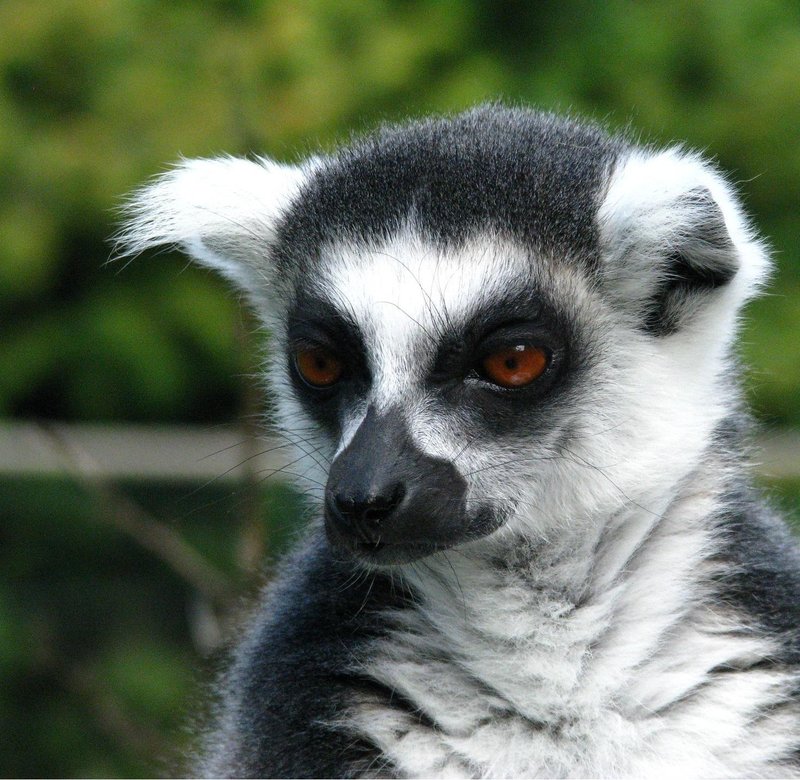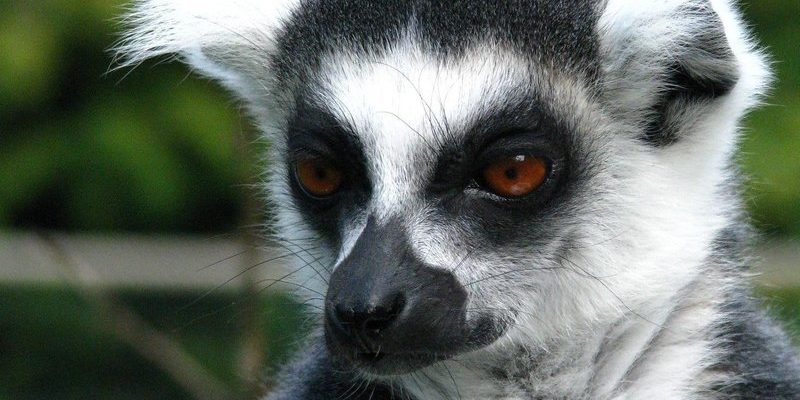
Lemurs are fascinating because they can’t be found just anywhere. In fact, they’re native to one specific place on Earth: the island of Madagascar. Think of Madagascar as the lemur playground, where these unique animals have evolved in isolation for millions of years. Let’s take a closer look at their natural habitats, the specific regions they inhabit on the island, and what makes their home so special.
The Unique Home of Lemurs: Madagascar
Madagascar is like an island full of wonders. It’s the fourth largest island in the world and boasts a wide variety of landscapes, from lush rainforests to dry spiny forests. What makes Madagascar particularly unique is its biodiversity. Over 90% of its wildlife, including all lemur species, is found nowhere else on Earth. Imagine having an entire island that’s home to creatures you can’t find anywhere else—this is the essence of Madagascar.
Lemurs inhabit various ecosystems across Madagascar. Different species have adapted to different environments, allowing them to thrive. So, whether they are leaping through the trees of the rainforests or foraging in the dry forests, lemurs have carved out a niche for themselves in this vibrant ecosystem. Some specific areas where lemurs reside include national parks and reserves, which play a crucial role in their conservation.
The Different Types of Lemur Habitats
Now, lemurs don’t all live in the same type of habitat. They can be found in several different ecosystems across Madagascar, and their preferences vary widely. Here are some of the main habitats where lemurs make their homes:
- Rainforests: These lush areas are rich in biodiversity and are home to species like the Indri and Sifaka.
- Dry forests: Lemurs like the Ring-tailed lemur thrive in these drier conditions.
- Spiny forests: Unique to the south of Madagascar, these forests host lemurs like the Eulemur species.
- Altitude forests: Found in the highlands, these cooler environments support species like the Browntail lemur.
Each of these habitats offers something different, from the food available to the protection from predators. This variety helps lemurs adapt and survive in the ever-changing conditions of Madagascar. It’s like they have their own little territory, with each species finding the best fit for its needs.
The Role of Climate in Lemur Distribution
Climate is another critical factor in where lemurs choose to live. Madagascar experiences a range of climates, from tropical in the north to arid in the south. Let me explain how this affects the lemurs:
– Tropical regions: These areas receive substantial rainfall, creating ideal conditions for lush rainforests filled with food sources like fruits and leaves. Here, lemurs are often found high up in the trees, where they can navigate the dense canopy to find food and avoid predators.
– Dry environments: In contrast, lemurs in drier areas need to be more resourceful. They adapt by eating different types of vegetation, such as the leaves and fruits of more drought-resistant plants.
Changes in climate can affect where lemurs can live, too. If certain areas become too dry due to climate change, lemurs might struggle. It’s a reminder of how interconnected our ecosystems are and how important it is to protect these unique habitats.
Conservation Areas and Their Importance
With the pressures of deforestation, habitat destruction, and climate change, conservation areas have become crucial for lemurs. Madagascar has established numerous national parks and reserves, which serve as safe havens for these animals. Parks like Andasibe-Mantadia and Ranomafana are prime examples of areas where lemurs can thrive.
These protected regions not only preserve the natural habitats of lemurs but also promote biodiversity more broadly. When lemurs are safe, it creates a ripple effect on the ecosystem. Various plant species flourish, and other animals also benefit from the conservation efforts in these areas.
Visitors to these parks can witness lemurs in their natural habitat and learn about the importance of conservation. It’s a chance to connect with nature and support efforts to protect these amazing creatures.
Why Lemur Habitat Matters
Understanding where lemurs live is more than just a curious fact; it’s essential for their survival and the health of our planet. Lemurs play a vital role in their ecosystems by helping with seed dispersal and maintaining tree populations. Without them, many plant species could decline, leading to a less diverse environment.
Additionally, lemurs are a part of Madagascar’s rich cultural heritage. They are often portrayed in local art and folklore, symbolizing the island’s unique wildlife. Protecting their habitat means preserving not only the animals but also the culture and history tied to them.
When we think about conservation, it’s not just about protecting an animal; it’s about safeguarding an entire ecosystem and the people who depend on it.
What We Can Do to Help
So, what can you do to help lemurs and their habitats? Here are a few simple actions anyone can take:
- Support conservation organizations: Many groups work in Madagascar to protect lemurs and their habitats. Consider donating or volunteering.
- Learn and share: The more people know about lemurs, the more support they’ll receive. Share this article or talk about lemurs with friends.
- Choose sustainable products: Avoid products that contribute to deforestation in Madagascar. Support brands that focus on sustainability.
Even small actions can contribute to protecting these incredible creatures and their homes. It’s about creating a collective effort for a brighter future.
In summary, lemurs are unique primates with a very specific home on the island of Madagascar. From the lush rainforests to the dry spiny forests, they’ve adapted to thrive in various habitats. With ongoing conservation efforts, we can help ensure that these fascinating animals continue to grace the Earth for generations to come.

